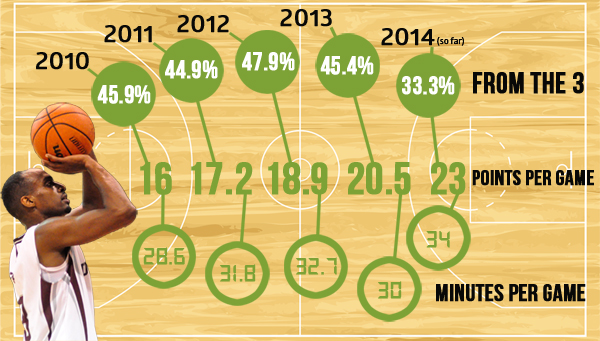Experts suggest steps students can take now to avoid a decade-long repayment process
WATERLOO (CUP)—ANYTHING WRITTEN ON financial planning and debt among university students is likely to be riddled with sound bites that seem to be common sense, as though students intelligent enough to enter a post-secondary institution should be able to budget and manage their money wisely and need only intermittent reminders.
Alas, as studies conducted by various prominent Canadian institutions point out, an assortment of factors conspire to complicate how students pay for their education and stay on track throughout their first four (or five, or six) years of university. It is now more important than ever for students to examine their finances, as the latest figures by Statistics Canada report the average debt accrued upon graduation by Canadian students is $20,000.
That’s not to say all students are burdened by severe debt—many are lucky enough to have had their parents save money for their education or help them along the way with some of the cost. In fact, 56 per cent of students in Canada polled this summer by a BMO Financial Group survey said they largely rely on their parents to fund their education. Regardless, awareness of the true financial toll of university education is lacking, according to some.
“Financial literacy is always a problem with first-year students,” said Sean Madden, the vice-president of university affairs for the Wilfrid Laurier University Students’ Union (WLUSU) and president of the Ontario Undergraduate Students’ Association (OUSA). “I know I experienced that.”
Students progressing through their university careers need to maintain a level of awareness of all facets of their financial situation. Those responsible for funding their own education because they are unable to fall back on parental support face the most pressure.
“Students don’t tend to have an idea of what they’re facing,” said Perry Quinton, vice-president of marketing at Investor Education Fund. “Tuition is the tip of the iceberg. There are a lot of other costs involved.”
Facts and figures
On average, a year of undergraduate education in Ontario carries a $6,500 price tag for tuition alone, according to a study by the Canadian Centre for Policy Alternatives (CCPA). Consider all the other costs students encounter, including rising ancillary fees, rent, food, phone, and entertainment, and it’s not difficult to see how those dependent on student loans manage to incur tens of thousands of dollars of debt over the course of a bachelor’s degree.
Working during university is one option, but for many students, balancing schoolwork and employment is unmanageable. The Ontario Student Assistance Program (OSAP) will “claw back” any earnings students make while they are in school beyond roughly 10 hours a week at minimum wage by decreasing the available loan.
“When you have a part-time job and you’re on OSAP, the job is a complement—it can’t supplement you financially,” said WLUSU president Nick Gibson.
Based on a $24,000 average debt load upon graduation, Quinton said the stakes are higher than some students realize.
“It’s either people with zero debt who have been able to save or had their parents fund their education or the other extreme is $48,000,” she said. “When you graduate with that kind of debt, you’re looking at decades before you’ll be able to pay [it] off.”
Costs of education in this province have not risen proportionately with income levels, according to the same CCPA study. While from 1990 to 2011, the average after-tax income for middle-class families in Ontario has risen only 12.5 per cent to $54,000, undergraduate tuition levels jumped from $2,500 annually to $6,500—an increase of 260 per cent.
While in the past it may have been feasible for a student to pay for their education through a combination of reasonable parental contributions, savings, and work, disproportionate cost increases today make it more likely that students will struggle financially or accumulate severe debt. According to a Canadian Council on Learning study, one in four bachelor graduates with large loans had a repayment rate at (or above) 15 per cent of their gross income— above the 10–12 per cent margin they cited that causes hardship.
Budget, budget, budget
For some, debt is unavoidable in light of the realities of paying for education. However, mitigating the amount of debt incurred and having plans to repay the accumulated total upon graduation are the two things students need to keep in mind.
Budgeting is key, according to Brian Smith, finance professor in the school of business and economics at Wilfrid Laurier University.
“Obviously it’s pretty common sense, but students need to budget ahead of time,” he said. “They should also be aware of contingency planning—thinking a little bit about planning for additional spending.”
“Budgeting is probably the most important exercise we can stress for first-year students,” said Madden.
“It’s important to have that plan on paper so you know what’s coming,” Quinton said. She urged students to keep tabs on spending in relation to their budget and adjust accordingly, saying, “Anything you can pay for now and not go into debt for, you will thank yourself [for] 20 years down the road.”
The number of students who have actually budgeted out their semester or year is questionable, given many young people seem entirely unaware of the reality of their financial situation. Only 20 per cent of students polled by RBC said that they plan and adhere to a monthly budget.
As students enter first year with their bank accounts plump from summer savings or freshly acquired student loans, it is all too easy to have an overly optimistic view of the situation.
“In my mind, I was in pretty good financial shape, but after first year it kind of went downhill,” Gibson recalled. “Whether you’re in a good spot or not, you need to realize in a couple of months that could change.”
“There can be a big learning curve, even in the first few months of school, that can have a dramatic impact on finances for years to come,” Quinton added.
Getting in touch with reality
Many students seem to have come to terms with the realities of debt, as indicated by this year’s RBC Student Spending and Savings Poll. A third of first-year students approached said they expect to have significant debt when they graduate.
How readily those graduates will be able to recover from that debt is questionable in some cases, according to Smith.
“The second part of the challenge to affordability is the capacity of students to repay any debt and that’s dependent on the job opportunities,” Smith said. “Students have to recognize that if they’re going to get a degree with a lower employment rate post-graduation, that’s going to challenge them financially.”
He added this fact should impact how students monitor and allocate spending during that degree.
“Sadly, students have to have a lifestyle that’s consistent with the kind of income they can expect when they graduate,” Smith said. “If you have a strong sense of entitlement, you kind of throw common sense out the window.”
Madden said the perception among students is often that they’re more than likely to find a well-paying job upon graduation from certain programs, and therefore they worry less about the prospects of repaying loans.
“I think they did a survey of [business administration] students who said, ‘We’re willing to pay more because we’re going to be making $100,000 when we get out of here.’ That’s not necessarily the case, but a culture has grown around these programs.”
If there’s any lesson to be learned from this, it’s that a loan cheque should not be cashed without deliberation.
“Something like OSAP has its advantages, but at the same time it’s still debt and you still need to pay it someday,” Quinton said. “While I wouldn’t advocate going cold turkey and not having any fun while you’re at school, there has to be moderation.
“I remember what it’s like—it’s not hard to rack up a [sizeable] bar bill on a weekly basis,” Quinton continued. “There [are] a lot of challenges when you’re first getting into it.”
The credit trap
In order to pay for the aforementioned drinks at the bar (and all other life necessities), many students are turning to credit cards. Credit card companies seemingly throw their cards at students like candy, in the hopes that the naive students will keep the same cards in their wallets once they enter the working world.
What students need to remember—and what almost every person interviewed for this article mentioned—is that credit cards can be very unforgiving if not used carefully.
“Students these days have a much easier time getting credit cards than their parents did,” Smith said. “That gives them an ability to borrow money that wasn’t there before and that’s where they get into trouble.”
Quinton noted the banks and credit card companies target students—she noticed them in droves at the Ontario Universities’ Fair last fall.
“It’s a pretty easy decision to use a credit card and what constitutes an emergency is a bit of a grey area,” she said. “What starts out as an emergency plan can quickly turn into debt spiraling out of control.”
Stay ahead of the game
Beyond budgeting, saving, and generally being responsible with your money during university, there’s not a whole lot else students can do to prepare and cope with the costs of post-secondary education today.
Awareness is the one thing that Quinton said students need to have most, since being responsible for one’s finances for the first time often lends itself more to blind ignorance than active planning.
“I think it’s so important to get ahead of the game,” Quinton stated. “I meet so many people that wish they knew then what they know now.”
—Mike Lakusiak, the Cord



